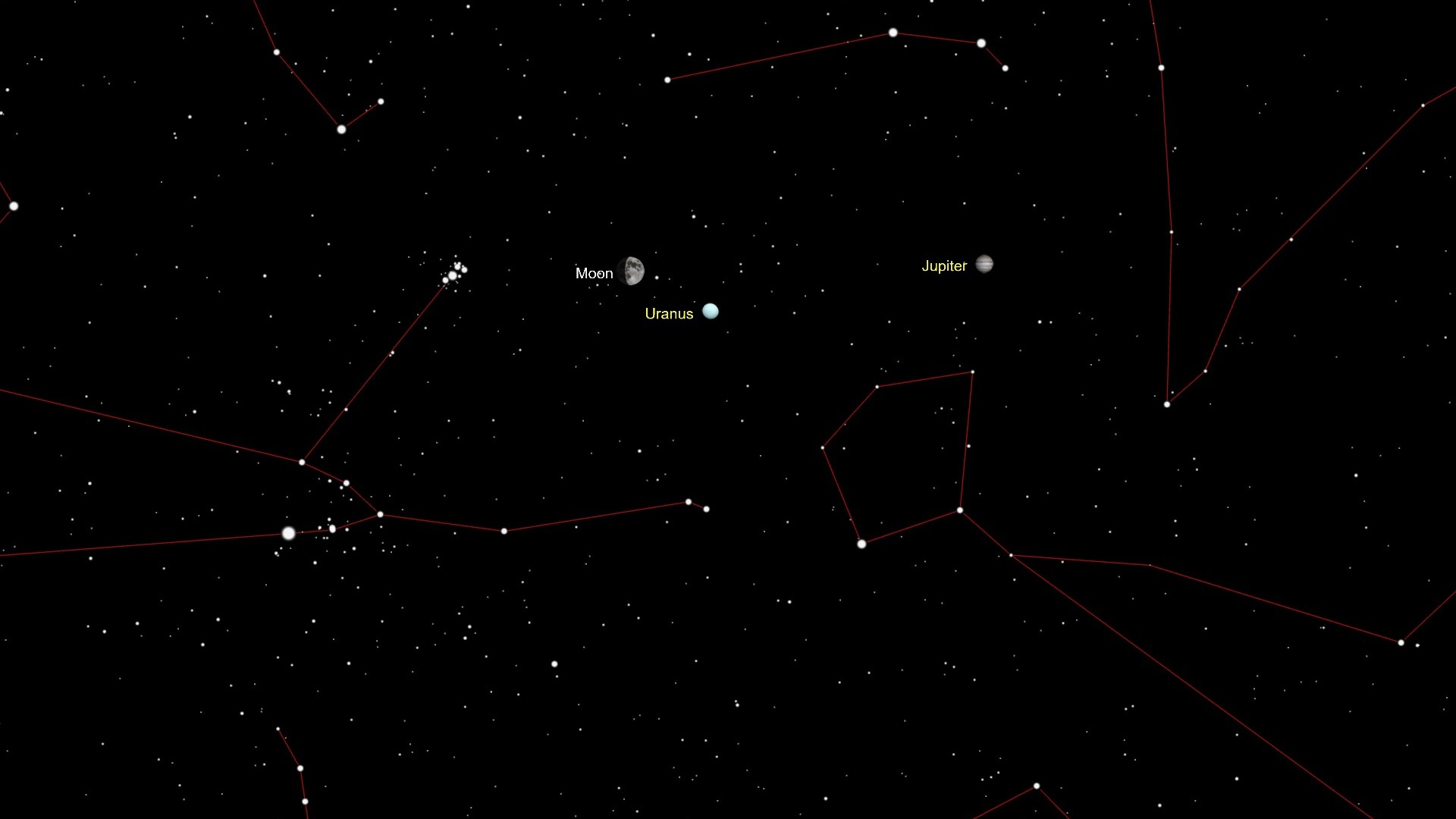Use the moon to find Uranus in the night sky tonight
The icy and distant planet will be just below and to the right of the moon.

The moon makes for a handy guide to locate Uranus in the night sky tonight (Jan. 19).
The elusive Uranus, the second-most distant planet in our solar system, will be just a few degrees away from the moon, making tonight an excellent time to get a glimpse of the ice giant.
To see Uranus beside the moon, look high in the eastern sky at sunset. Uranus will appear as a blue-green orb, found to the moon's lower right (or celestial south-southwest). Binoculars with high magnification should be able to resolve it, but a telescope will make it much easier.
During the meetup with Uranus, the eight-day-old moon will be 69.9% illuminated as it waxes towards the first full moon of 2024, January's Wolf Moon, which occurs on Jan. 25.
Related: Night sky, January 2024: What you can see tonight

Looking for a telescope to see Uranus up close? We recommend the Celestron Astro Fi 102 as the top pick in our best beginner's telescope guide.
Uranus will be fairly dim at magnitude 5.7, while the moon will be quite bright and impossible to miss, shining at magnitude -10.94. (Negative numbers indicate particularly bright objects in the night sky.)
The brightness of the moon means Uranus will be easier to see if you hide the moon just beyond the upper edge of your binoculars' field of view, or if you use a telescope for an up-close look. While you're gazing up there, find the medium-bright star Botein (Delta Arietis), which will appear between the moon and Uranus. It can also be used to help guide you to Uranus when the moon isn't nearby as it will be tonight.
Get the Space.com Newsletter
Breaking space news, the latest updates on rocket launches, skywatching events and more!
The moon and Uranus will appear in the Taurus constellation, which contains the skywatching favorite M45, the Pleiades star cluster. Nearby will also be Jupiter, which will be in between the aquatic constellations of Cetus, the Whale, and Pisces, the Fishes.

If you're hoping to catch a close-up look at the moon, Uranus or anything in the night sky, be sure to read our guides on the best telescopes and best binoculars to help you find the optics that suit your needs and budget.
And if you want to take your own photos of the moon, Uranus or any other amazing sights in the night sky, check out our guides on how to photograph the moon and how to photograph the planets, as well as our breakdowns of the best cameras for astrophotography and best lenses for astrophotography.
Editor's Note: If you snap an image of the moon beside Uranus and would like to share it with Space.com’s readers, send your photo(s), comments, and your name and location to spacephotos@space.com.
Join our Space Forums to keep talking space on the latest missions, night sky and more! And if you have a news tip, correction or comment, let us know at: community@space.com.

Brett is curious about emerging aerospace technologies, alternative launch concepts, military space developments and uncrewed aircraft systems. Brett's work has appeared on Scientific American, The War Zone, Popular Science, the History Channel, Science Discovery and more. Brett has English degrees from Clemson University and the University of North Carolina at Charlotte. In his free time, Brett enjoys skywatching throughout the dark skies of the Appalachian mountains.









